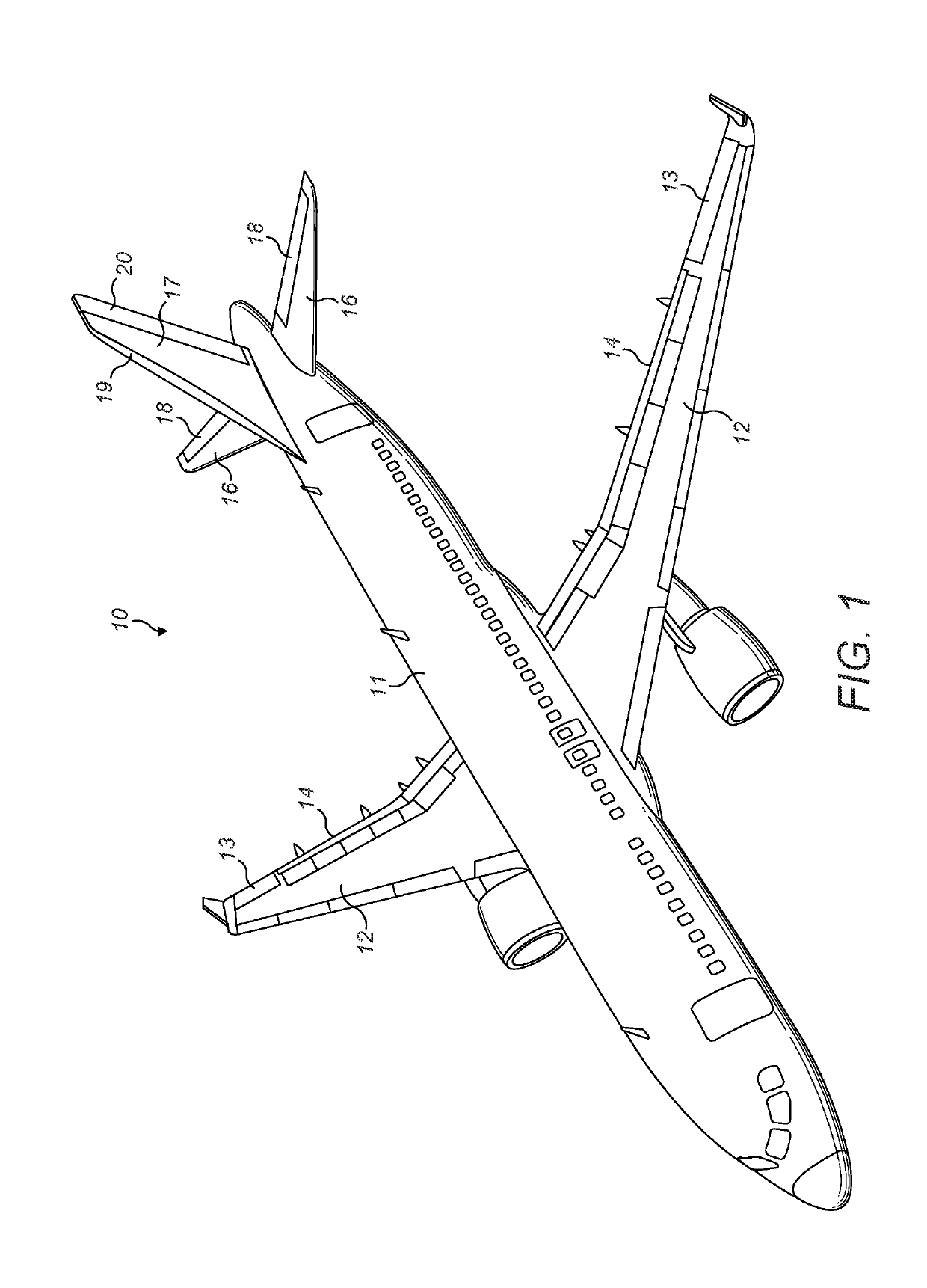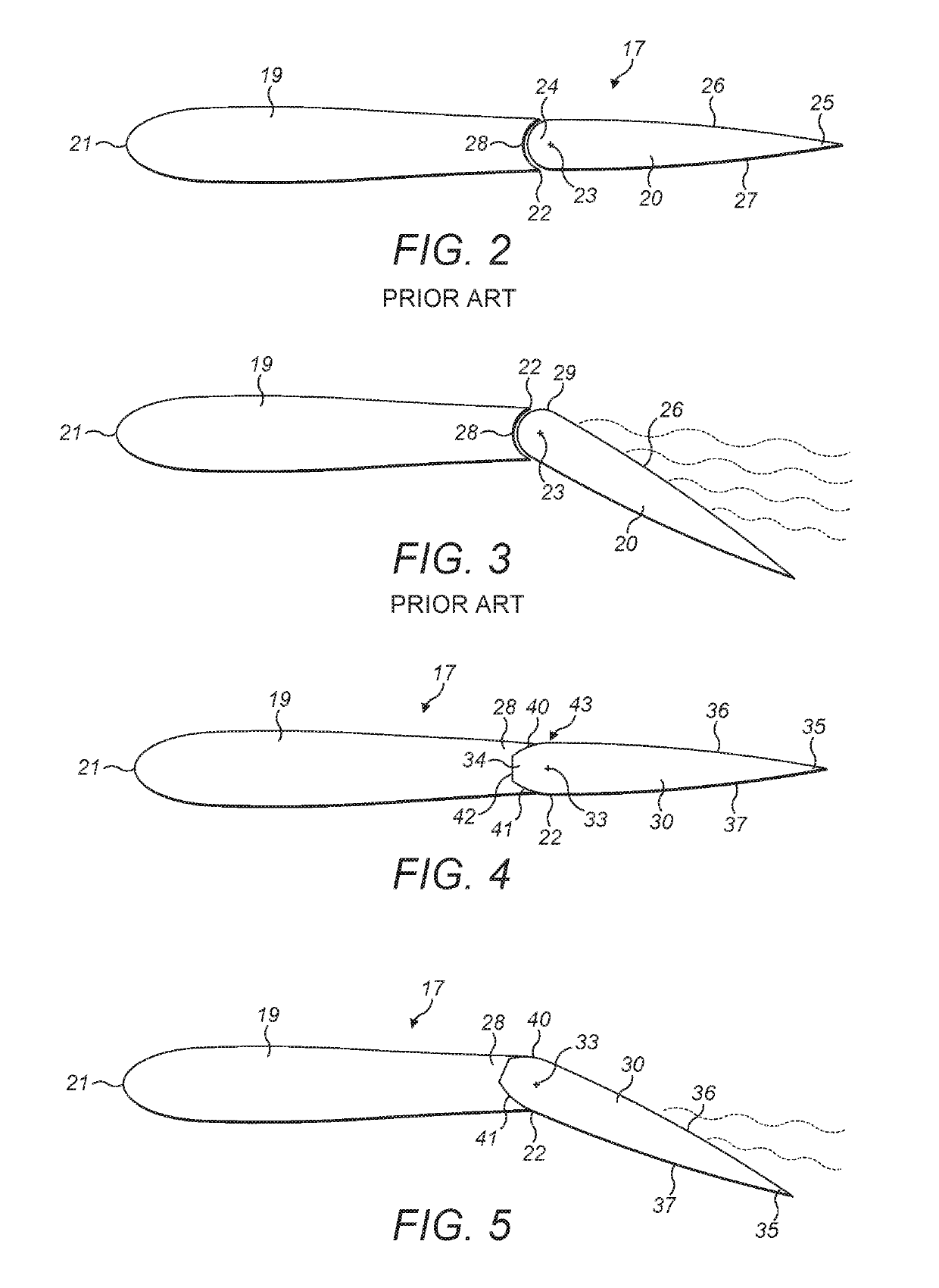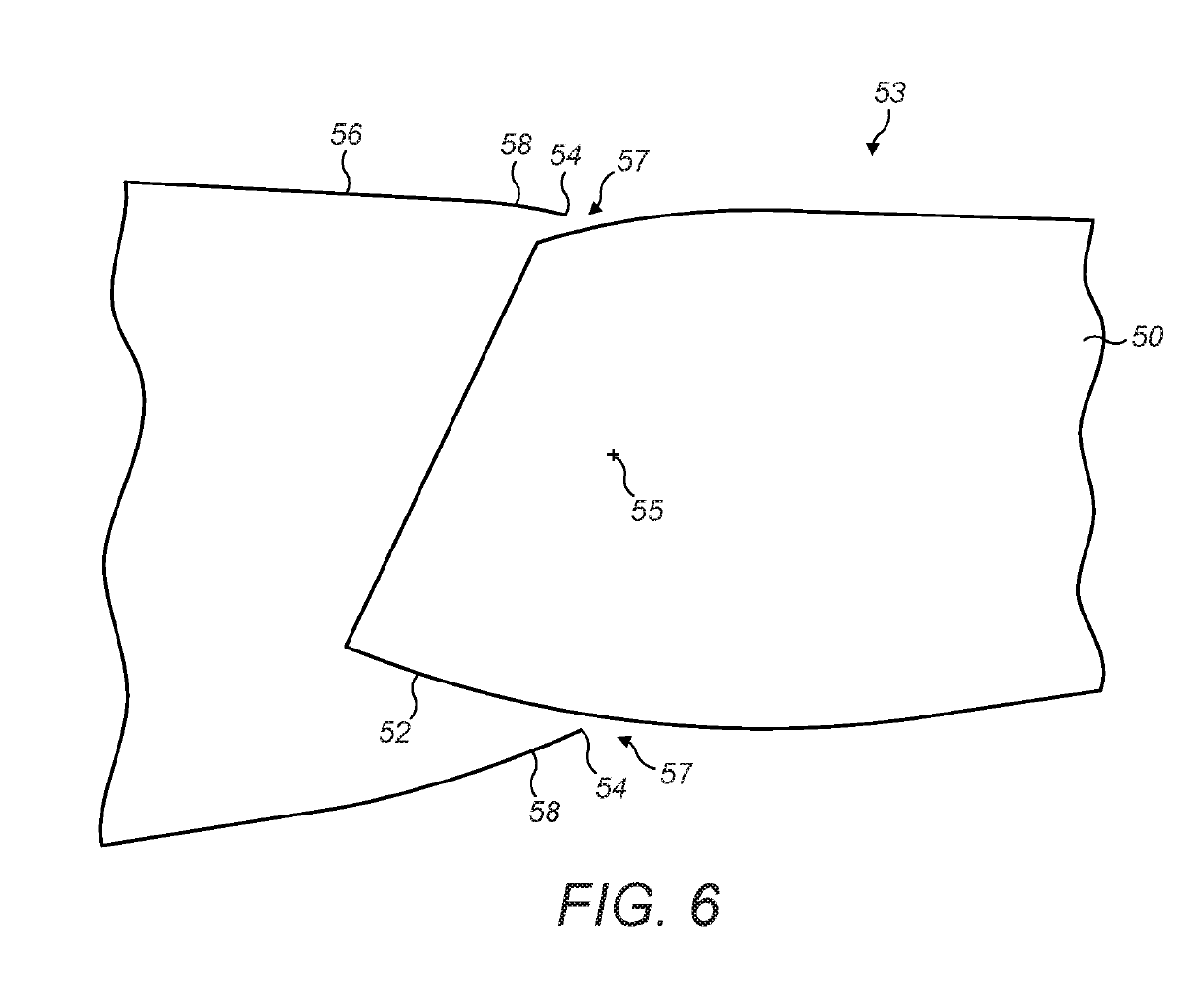Control surface for an aircraft
a control surface and aircraft technology, applied in aircraft control, aircraft stabilisation, aircraft components, etc., can solve the problems of aircraft stalling and dramatic increase of drag, and achieve the effect of reducing the separation of boundary layers and delay
- Summary
- Abstract
- Description
- Claims
- Application Information
AI Technical Summary
Benefits of technology
Problems solved by technology
Method used
Image
Examples
Embodiment Construction
)
[0041]A fixed wing aircraft 10 is shown in FIG. 1. The aircraft 10 includes a fuselage 11. Two wings 12, acting as lifting surfaces, extend from the fuselage 11. It will be appreciated that lifting surfaces may take a variety of different planform shapes and profiles depending on the particular application. Each wing 12 has an aileron 13, forming a control surface, at its trailing edge 14. Proximate an aft end 15 of the aircraft 10 are two horizontal tail planes 16 and a vertical tail plane 17. Each horizontal tail plane 16 has an elevator 18, forming a control surface, at its trailing edge. The vertical tail plane 17 comprises a vertical fin 19 and a rudder 20.
[0042]A schematic cross-sectional profile view of a known arrangement of the vertical tail plane 17 defined midway along the spanwise length of the vertical tail plane 17 is shown in FIGS. 2 and 3. The vertical fin 19 is a fixed section with a fin leading edge 21 and a boundary edge 22. At the boundary edge 22 is the rudder ...
PUM
 Login to View More
Login to View More Abstract
Description
Claims
Application Information
 Login to View More
Login to View More - R&D
- Intellectual Property
- Life Sciences
- Materials
- Tech Scout
- Unparalleled Data Quality
- Higher Quality Content
- 60% Fewer Hallucinations
Browse by: Latest US Patents, China's latest patents, Technical Efficacy Thesaurus, Application Domain, Technology Topic, Popular Technical Reports.
© 2025 PatSnap. All rights reserved.Legal|Privacy policy|Modern Slavery Act Transparency Statement|Sitemap|About US| Contact US: help@patsnap.com



